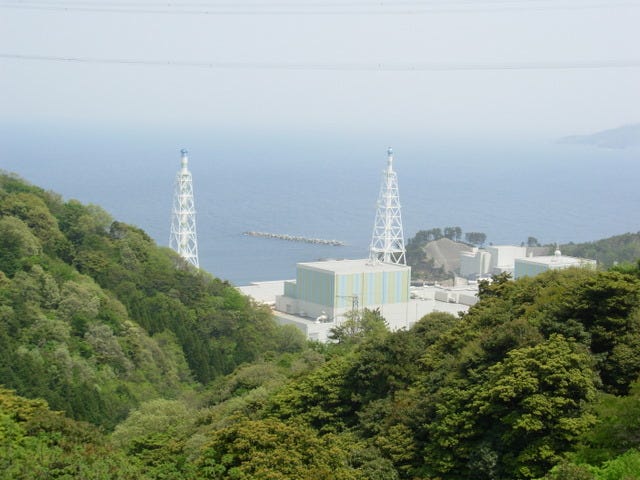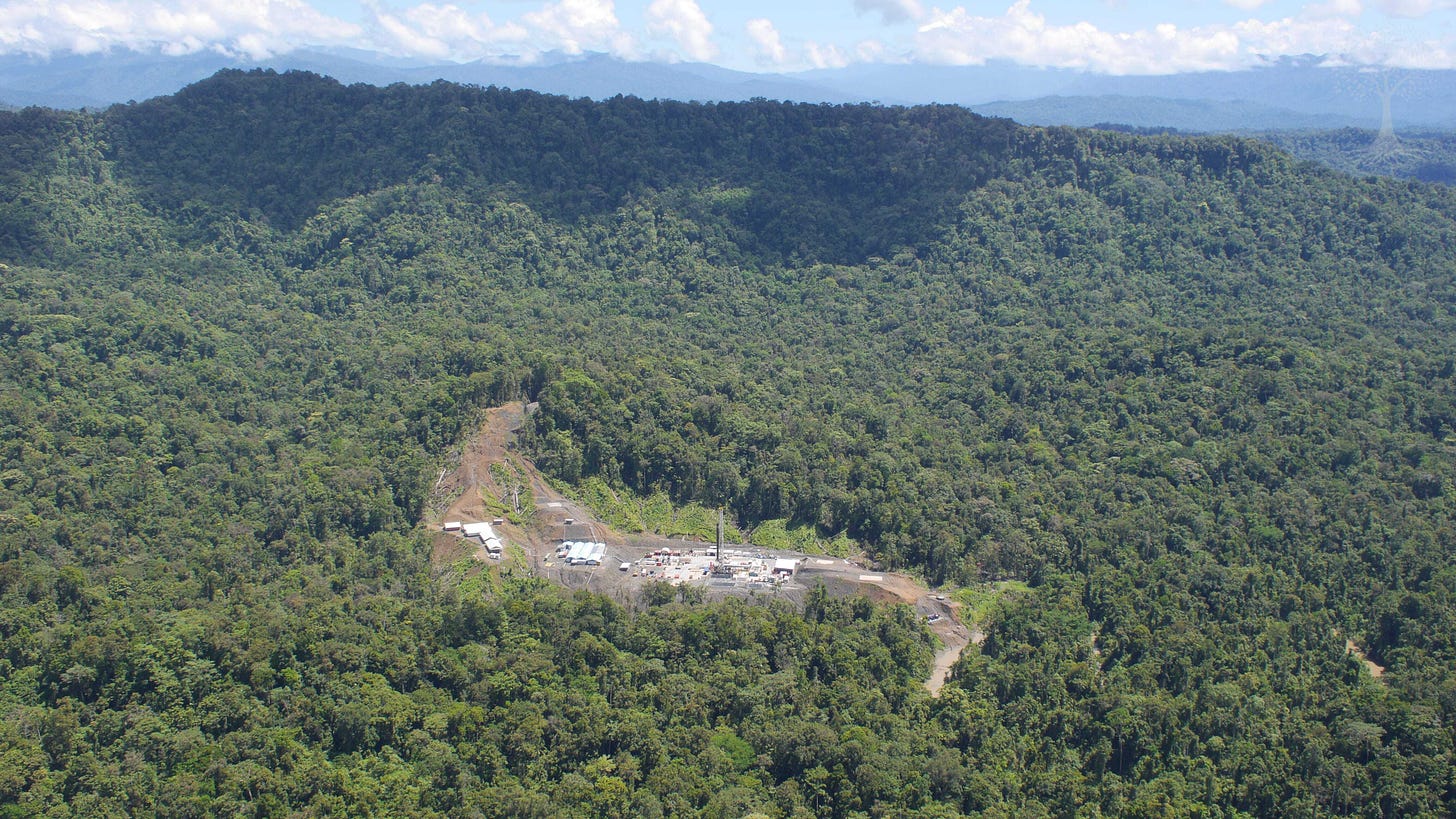Looking for Inefficiencies & Defining our Downside
A closer look at two of Panah's investments in 'fallen angels': a Papua New Guinean gas explorer and a Japanese power plant service company
This Insight is not investment advice and should not be construed as such. Past performance is not predictive of future results. Fund(s) managed by Seraya Investment may be long or short securities mentioned in this Insight. Any resemblance of people or companies mentioned in this Insight to real entities is purely coincidental. Our full Disclaimer can be found here.
This Insight is an extract adapted from the Panah Fund letter to investors for Q2 2016.1
The Panah Fund’s investment process is multi-faceted, though we follow basic principles when looking for ideas and developing an investment hypothesis. At the risk of stating the obvious, we seek to find opportunities where we think the market is mispricing the shares of a company (or occasionally another financial instrument). So much the better if the opportunity is in a high-quality firm.
Such inefficiencies are of course not widespread, and so this process often means that we have to wander roads less-travelled to find more unusual investment ideas. Sometimes this is in smaller companies, and at other times in markets or sub-sectors which are not well-covered or are out-of-favour with the sell-side brokerage community.
If we think we have found an interesting idea, we also try to understand why we think the market is presenting us with an opportunity to make money! If we can’t work out the reason, then something might well be wrong with our investment thesis.
Once we have found something that we think might work, it is only natural that we expend a fair amount of effort trying to define and capture the upside of this opportunity. However, we also spend a great deal of time worrying about the potential downside to each investment – how much money do we stand to lose if we are wrong?
One area where we have managed to make money for investors over the last year is in the shares of companies which had fallen from grace with the market, for reasons which we judged had little to do with the company’s fundamentals or future prospects.
Below we have written about two examples of Panah’s investments in such ‘fallen angels’, to illustrate to investors how we work. These two companies also happen to be the fund’s largest positions at present.
TABLE OF CONTENTS
Case Study: Papua New Guinean Gas Explorer (Current Market Cap US $2.3bn)
As of end-June 2016, Panah’s largest single long holding was a US-listed gas exploration stock which has most of its assets in Papua New Guinea (‘PNG’). We are holding the position in the form of shares and call options.
A previous CEO of the firm had worked hard to find and prove up substantial gas reserves in PNG over the course of more than a decade, though he didn’t have much success moving these gas fields towards development. Instead, the company became side-tracked with non-core businesses (e.g., PNG fuel stations), and corporate governance concerns emerged.
A new CEO was appointed in mid-2013, and he quickly set about streamlining the firm’s assets to create cash (e.g., divesting the fuel stations in mid-2014 for US ~$500mn), while also pushing hard to develop the firm’s gas reserves.
Significant progress came with an agreement in late 2013 to sell a material interest in the firm’s most prospective gas field to a major French oil and gas company, thus clearing the way for joint development of the field. This transaction also included a provision which committed the French major to pay a fixed amount to the PNG explorer (due on various development milestones), and also make additional variable future cash payments which would be dependent on the amount of gas found in the field (though not contingent on the price of oil or gas).
These bold decisions by the new CEO put the PNG exploration company in a position to be able to survive the collapse in the price of oil, which commenced in the summer of 2014 and came to a climax in early 2015 after a -75% fall.
We travelled to Papua New Guinea in late 2014 to visit this exploration company and to see a neighbouring Australian-listed gas stock with PNG assets, which had recently shipped its first Liquefied Natural Gas (‘LNG’) cargo. Note that the operating partner on this PNG LNG project is a major US oil company, highly respected for its experience in operating successful LNG projects around the world. This seemed to show that PNG was already well on its way to becoming a major low-cost LNG producer.
The small PNG gas explorer thus seemed to be in fairly good company. It was also much better positioned to develop its assets than in the past, despite the fall in hydrocarbon prices. Given the changes that large-scale LNG development would inevitably bring to PNG, we were also happy to note that these oil and gas companies seemed to be taking their social and environmental responsibilities extremely seriously. Sadly, in the past, all too often this has not been the case for resource companies operating in developing countries, particularly PNG).
Following our trip, we did more work on the companies involved in hydrocarbon development in the country, and then bided our time as the oil price rout inflicted its damage on oil and gas stocks around the world.
Panah started to establish a position in the PNG exploration company in late 2015, a year after our visit, and we accelerated our purchase of shares and call options in early 2016 as the company’s stock price collapsed along with the oil market.
Please note that our decision to buy shares in this company was not a somewhat bold (or somewhat obscure) call on the coming rebound in the price of oil. Rather, we were fairly confident that development of these low-cost assets would go ahead once stability returned.
Moreover, at the price we were buying, we were fairly comfortable with what we understood to be our potential downside. In the market panic, the entire market capitalisation of the PNG explorer had fallen below the likely amount of cash receivables owed to it by the French major (with whom they had announced a partnership in late 2013). These cash payments were contingent on the amount of gas in the field (according to an independent certification process), and not on the oil price.
We checked and rechecked our assumptions on the likely amount of gas in the field (making suitably conservative projections, and consulting with geologists where necessary). This process gave us sufficient conviction that in effect, the market was attributing zero value to the PNG company’s interests in highly prospective gas fields (where drilling results were coming in strong), as well as various other exploration tenements; we were thus fairly confident that we had ‘defined our downside’.
What if the stock price of the PNG company were to fall further or remain at depressed levels? In that case, we judged that the French partner, rather than making the payment, might instead launch a takeover bid at a discount to the cash they owed. This would theoretically save money and give them control over one of Asia’s largest undeveloped low-cost gas fields, plus equity ownership in almost four million acres of highly prospective PNG petroleum licenses.
Management behaviour (and the incentive structure) at the PNG explorer were consistent with a company which had placed a ‘for sale’ sign outside the door – we guessed that any takeover bid would be welcome.
In mid-May 2016, the PNG exploration company was subject to a takeover bid which caused the share price to jump sharply higher. The acquisition attempt was launched by the Australian-listed gas producer with neighbouring assets in PNG which we had visited in late 2014. This Australian company announced that the takeover would be followed by a back-to-back deal with the French major to give these two companies effective joint control of the PNG explorer’s assets.
The proposed deal seemed to have been structured thoughtfully, with good potential for downstream cooperation on infrastructure to produce real synergies (all too rare in most M&A deals). The bid was in shares (with the option to take partial payment in cash), but also included an additional ‘Contingent Value Right’ (CVR) that would pay shareholders more if the explorer’s key gas field was found to contain more hydrocarbons than expected following an independent appraisal.
Panah added to its holding in the PNG exploration company immediately as news of the takeover broke. In the days following the acquisition, we also hedged around half of our long position by shorting two other gas-related stocks listed in Australia (one of which was the bidder, and the other a gas stock with poor fundamentals that has been involved in the problematic North West Shelf gas project).
As the share price of the PNG explorer drifted upwards, we converted some of our call options into shares, and then gently trimmed back the size of the position on strength. Towards the end of June, the PNG explorer disclosed that it was in discussions with yet another potential acquirer, which gave the share price an extra boost on the last trading day of June.
At the time of writing, the identity of the second potential acquirer has not been officially disclosed. However, the media has speculated, not unreasonably in our view – that the counterbid might come from the US oil major company which is currently the operator of the existing PNG LNG project.
The deadline for shareholders to accept the initial takeover bid is the end of July, and if there is to be another counterbid, it must come before this date. We believe that a counterbid is not unlikely, and would also not rule out the possibility of other potential acquirers also throwing their hats into the ring.
We are currently maintaining our position in the PNG explorer, as we see more potential upside in the stock price as a result of the takeover process and/or as the value of the CVR is realised. We remain ready, however, to pare back the size of our holding on any major spike in the stock price, or if necessary as we gain more clarity on the outcome of the takeover battle.
Panah’s holding in this PNG gas explorer contributed roughly one quarter of Panah’s returns in the first half of 2016. More importantly, we believe that we initiated the position with a sufficient ‘margin of safety’ such that the capital of the fund was not subject to any unnecessary risk.
Depending on the outcome of the takeover battle, we are hopeful that this position has more upside in the second half of the year.
Case Study: Japanese Power Plant Service Company (Current Market Cap US $1.6bn)
The fund’s second largest long position at end-June was our holding in a Japanese specialist plant-engineering company which derives much of its revenues from the construction and maintenance of thermal, hydroelectric, and nuclear power plants, as well as infrastructure and industrial plants (mostly in Japan).
This company is the separately listed ~60% subsidiary of a sprawling refrigerator-to-nuclear power conglomerate which was implicated in a serious accounting scandal in April 2015. As the scandal deepened over the summer last year, it became clear that various divisions of the conglomerate had massively overstated their profits during the preceding decade, with complicity at the highest levels of management. During the course of this potentially existential crisis, over the year to Feb 2016, the share price of the conglomerate fell by ~70%, dragging its subsidiaries with it.
The stock price of the specialist plant-engineering company also crumbled, as sell-side analysts – like rats jumping from a sinking ship in a storm – rushed to discontinue coverage. Institutional investors dumped their shares as the firm’s shares were excised from the JPX-Nikkei 400 Index. It soon became apparent, however, that the rats had been too hasty to jump overboard; the ship was not holed beneath the waterline.
Even as general news-flow for the wider group remained relentlessly negative, in late July 2015 the plant-engineering company quietly announced that it had been given the ‘all-clear’ on accounting malfeasance by an independent audit committee. In the febrile market environment of summer 2015, however, this went virtually unnoticed and was not enough to prevent more share price weakness.
By the time the company’s share price bottomed in late August 2015, the share price had fallen ~40% to below 1.0x book value; it has only traded at this valuation on a handful of occasions in the last 15 years. By that time, the firm sported a single-digit P/E ratio and a ~30% EBIT-to-EV yield.
Conversations with management during a visit to their HQ in Yokohama, suggested to us that this was a reasonable price to pay for a stable company with ~70% recurring revenues, strong and consistent free cash flow, likely record profits in FY2016/3 and FY2017/3, and solid medium-term growth potential (as the company grows its operations in Japan and SE Asia).
Management decided to reward shareholders in late 2015 by paying a special dividend and increasing their recurring dividend payout to 30% (implying a dividend yield in excess of 3%). This was easily affordable for a company with cash that exceeded 60% of market capitalisation.

This cash cushion seemed to provide an adequate margin-of-safety, yet we also had concerns. Most of the plant-engineering company’s cash was actually kept ‘on deposit’ with group companies (i.e., lent out to the parent company on favourable terms), which in our view was bad for returns and raised corporate governance concerns.
Another risk was that 40-50% of the plant-engineering company’s sales were routed through the parent, enabling the scandal-ridden conglomerate to push out its payables and worsen cash collection for the subsidiary (thus impacting cash flow in the near-term). Nevertheless, we saw Japan’s new corporate governance code as one way that minority shareholders might be able to protect themselves.
We were also concerned that any serious deterioration in the conglomerate’s condition (possibly leading to a delisting) might also have the potential to impact future revenue generation for the plant maintenance subsidiary, although we were heartened that management had already moved to diversify their revenue away from the parent company over the previous five years - a trend we expected to continue.
Panah first established an interest in this plant-engineering company in the autumn of 2015 as shares of the company dipped below a 1.0x price-to-book ratio. Our interest grew in early 2016 as adverse general market conditions reasserted themselves and the share price once again dipped to attractive levels.
As the company reported solid earnings numbers in 2016, confidence returned, prompting a stock price rally of >50% from the lows. This recovery has encouraged several bedraggled sell-side analysts to (re)initiate coverage recently with target prices ~20% above the current market price (at levels which are roughly in line with our estimates for current ‘fair value’ for the stock).
We still see room for revenue growth in the longer-term as many more power plants are set to come online in Japan between 2020 and 2025, and elsewhere in Asia - these will all need to be built and maintained. We also anticipate the possibility of improvement in corporate governance, cash management and possibly shareholder returns in the near-term.
One large foreign shareholder has recently started to engage publicly and actively with the management and board of the plant maintenance company to promote corporate governance improvements. We have also been making such representations via letters and in meetings.
Over time, we anticipate that investors will return to this plant maintenance company, attracted by stable cash flow, an improving yield, a solid growth profile and a reasonable valuation.
Thank you for reading.
Andrew Limond







